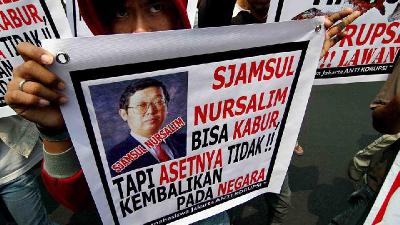Joyce Josephine’s Clarification
Monday, April 5, 2021
Joyce Josephine clarifies information in the cover story article of Tempo English of the January 25-31, 2021 issue titled Aid Packages for the Red Party.
arsip tempo : 171401891877.

IN the cover story of Tempo English of the January 25-31, 2021 issue titled Aid Packages for the Red Party, a sentence reads: “A law enforcer said Joyce Josephine was the Pertani employee who actively lobbied Adi Wahono and Matheus Joko. When asked to comment, Joyce refused to offer a response. ‘I don’t have the authority to comment,’” she said.”
I would like to make a clarification and rebuttal that the infor
...
Subscribe to continue reading.
We craft news with stories.
 For the benefits of subscribing to Digital Tempo, See More
For the benefits of subscribing to Digital Tempo, See More











